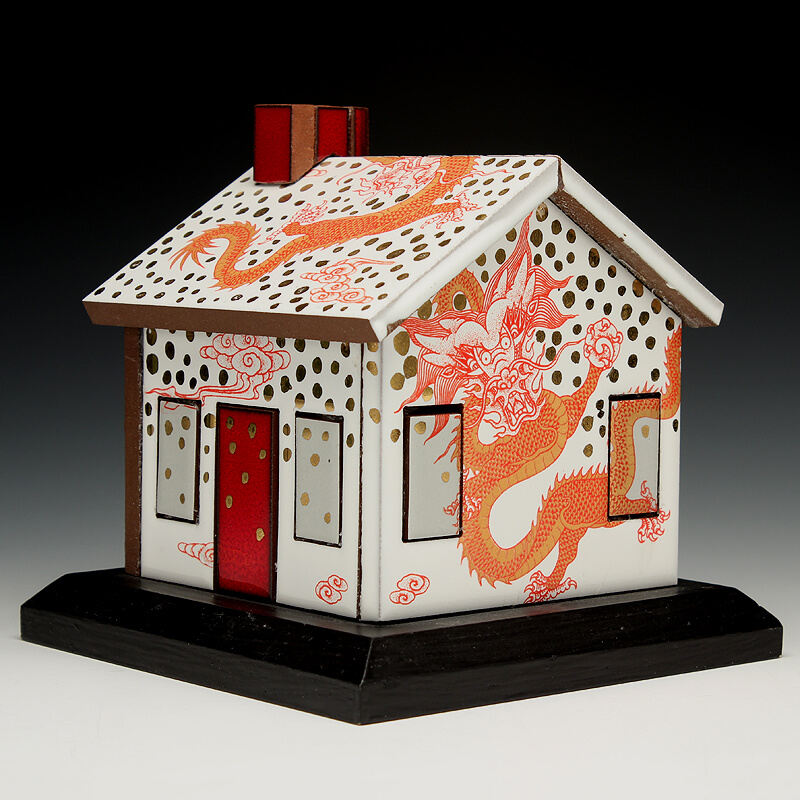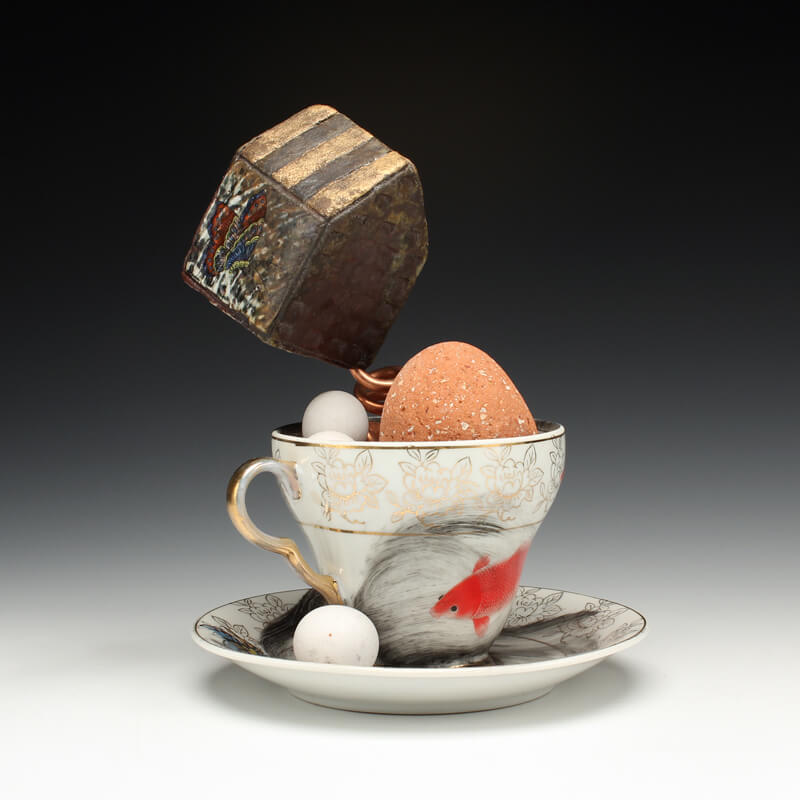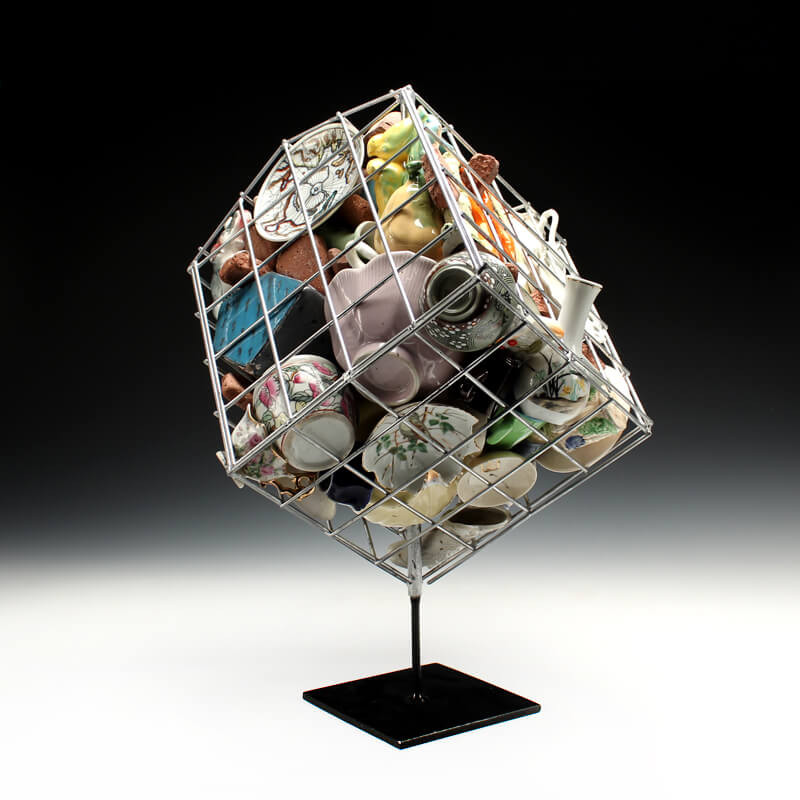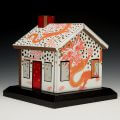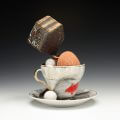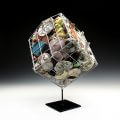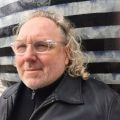
Robert Harrison is a practicing artist who lives and works in Helena, Montana, USA. He has built his 30+ year career in the large-scale site-specific architectural sculpture realm along with smaller-scale studio activity out of his Granitewood Studio just west of Helena.
He holds BFA and MFA degrees in Ceramics and is a member of the International Academy of Ceramics (Geneva), founding member of the World Association of Brick Artists (WABA) and Fellow of NCECA (the National Council on Education for the Ceramic Arts). His exhibition and installation record is global and extensive.
I began my professional career working in ceramics over forty years ago. My initial work was through the vessel format, focusing on form and traditions in clay. Over time, the scale of the work increased along with a focus on site; the ideas drawing heavily on influences in architecture, land art and the introduction of additional sculptural materials.
Site Specific Architectural Sculpture
I have been exploring architectural concepts in both the larger site-specific outdoor and museum installations as well as a body of smaller scale studio works over the past four decades, attempting to play one body of work off the other. I continue to create and install large-scale commissioned work in both the public and private art realms.
Employing archetypal architectural elements (columns and arches) and using a set of parameters described by the Italian Renaissance architect Andrea Palladio, I have designed and built dozens of site-specific works globally. Additionally, I have been designing and building prototypical ‘house’ sculptures utilizing ‘gabion’ technology and filling the interior cavities with collected ceramic and natural materials.
The specified site for a commissioned work plays a critical role in the design, creation and installation of my large-scale sculpture. Every effort is taken to include materials that are indigenous to the place and important to the community or individuals. I encourage interaction with the community while working, considering the activity part of my educational mandate.
Over the past three decades I have had many opportunities to work with national and international brick, ceramic tile and clay pipe factories. The challenge I have set for myself is to explore the potential of these industrial opportunities and utilize the resources and tools they offer to further my creative pursuits in both large and small scales.
The World Association of Brick Artists (WABA) group I helped to establish in 2011, has provided important opportunities to travel and create and install large-scale sculptural works globally with my peers. This group activity has nurtured and promoted artistic growth in all the WABA members.
Studio Ceramics
My studio work is more intimate, ranging in size from hand-held objects to larger pedestal works. It has included a variety of materials and allowed for intensified exploration of form and content. Classical architecture and the prototypical ‘house’ form continue to be major sources of inspiration for my studio work. I have intentionally focused my studio practice in a ceramics orientation, in essence bringing my studio work full circle, and back to my ceramic roots.
The spaces I create on the surfaces of my sculptural forms allow for the development of narratives through the use of china paints (used to depict flowing energy), ceramic decals and ceramic lusters. I trace the foundation of my layering of complex imagery to the paper collages I began creating during my teenage years, which transitioned to the use of china paint, ceramic decals and ceramic lusters in art school in the 1970’s. A 1973 exhibition of Howard Kottler’s industrially produced porcelain plates with commercially produced and altered ceramic decals had a profound effect on my studio art making activity.
Maximalism, the ‘balance of complexity’ or ‘ordered chaos’ seems to be an apt description of the layered surfaces I am drawn to, which in turn create the evolving narratives in my studio work. The narratives touch on a diversity of subjects, from nature and sustainability to world cultures and architecture.
I have collected ceramic decals for decades, from both national and international sources, purchasing large quantities of ceramic decals for my studio inventory. While working in Jingdezhen, China I toured ceramic decal factories and purchased profoundly beautiful decals that I continue to utilize. In addition, I regularly print my own ceramic decals which, when combined with the industrially produced ceramic decals create the collaged narrative surfaces typical of my current studio work.
My use of ceramic china paints, ceramic decals and ceramic lusters to create narratives invite the viewer to focus on the surfaces of the sculptural forms that celebrate the diversity of global cultures and ethnicities. My hope is that the narratives spark thought, conversation and personal memories, which then has the potential to lead to positive change and acceptance of diverse societal cultures.
Sustainable Ceramics
I made a commitment to sustainability in my ceramics practice decades ago, by reusing, recycling and reclaiming ceramic materials to create my large-scale brick works at the Archie Bray Foundation for the Ceramic Arts. The Bray provided outdoor space and historic brick from the dormant Western Clay Manufacturing Company brick factory to explore large-scale architectural site sculpture. I have continued the activity of reusing, recycling and reclaiming brick, tile and clay pipe and expanded the practice to include porcelain vessels and sculpture collected from thrift stores for use in both my large-scale site works and in my studio activity.
While President of NCECA (National Council on Education for the Ceramic Arts) I initiated the formation of the NCECA Green Task Force (GTF) that works to inform and educate on issues of sustainability and ceramic practices. The GTF has become an integral element of NCECA and my work with the GTF continues to the present.
Additionally, I authored the book: Sustainable Ceramics: A Studio Guide in 2013 published by Bloomsbury (London) and the American Ceramic Society (Ohio) as a part of my commitment to the field of ceramics.
Space is a primary component of my work and the consideration of interior or exterior space is elemental to the challenges of working in any scale, be it monumental projects or the intimacy of a hand-held studio object. The Architecture of Space has defined itself as the focus of my artistic exploration.
I continue to observe, explore and learn from life’s experiences each and every day. Regardless of the opportunity or application, my continued effort is to respond to the environment (site), utilize the given space and create work that resonates with a ceramic echo.

